Aspley Guise Church Architecture
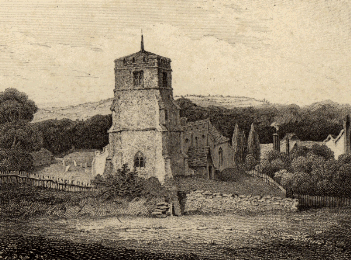
Saint Botolph's in 1819
Saint Botolph's church is made from ironstone, with ashlar facings and, at first glance, looks almost entirely Victorian from the outside. However, there has been a church on or near this spot since at least 1188 when the advowson was granted to Simon de Beauchamp and probably for many centuries before that.
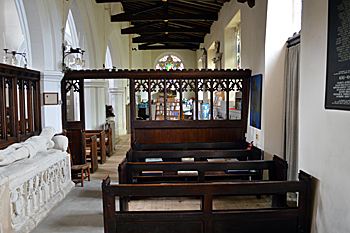
The north aisle looking west May 2017
D.T.Powell in his book "Notes and Drawings - Bedfordshire" of 1810 remarked that "the church itself is in no way fine or curious". Nikolaus Pevsner in the volume on Bedfordshire, Huntngdonshire and Peterborough in his Buildings of England series describes the building as: "externally almost entirely Victorian". However, this Victorian look was the work of restorers. Pevsner goes on to note that only the tower and the north arcade were "genuine", being Perpendicular in style. However, G.Boissier in his "Notes on Churches in the Diocese of Lincoln" of 1827 thought that the nave contained Decorated work.
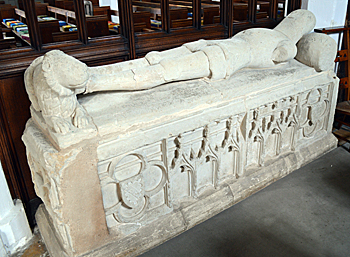
Supposed tomb of Sir William de Tyrynton May 2017
The north aisle contains one object which is definitely medieval in date. This is the rather battered tomb of a knight. It is thought to be Sir William de Tyrynton, who may have died around 1400, though both identification and the date are conjectural.

Brass of John Danvers [X67/934/11]
The north aisle also has floor brasses. One of these has traditionally been ascribed to John Danvers, the Rector from 1395 to 1414. The other is thought to be of Sir John de Gyse IV of about 1500.
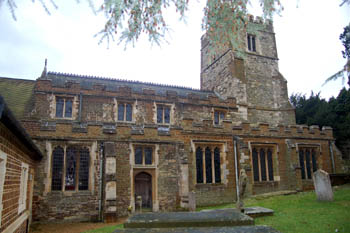
Saint Botolph's from the north - showing the north aisle, one of the few pieces of original architecture left - January 2008
The Department of Environment, when listing the church as Grade II* (a particularly important building of special interest) in 1961 considered that the nave is 15th century and that the eastern part of the north aisle (now the north chapel) is also medieval and, although the roofs are mostly 19th century, an original moulded king-post truss still stands at the east end of the north aisle which also has a 15th century screen.
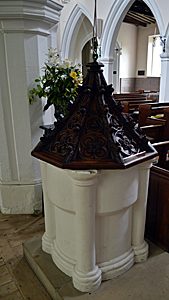
The font May 2017
The circular font is 14th century with four shafts forming the corners. In the north wall of the chancel is a brass to William Stone, rector from 1583 to 1617.

Monument to William Stone May 2017